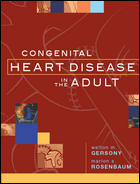?the authors} have carefully summarized their 20 to 40 years
of clinical experience to provide the reader with the most
essential and practical information about patients with
congenital heart disease.-- Review in JAMA
Includes 50 full-color echocardiograms and angiograms
Depicts each important congenital heart disease lesion as
acyanotic or cyanotic
Describes the surgical approach that corrects or palliates the
lesion꿻he secondary consequences and natural history of each
lesion꿢nd the problems and consequences related to types of
surgical interventions
Discusses end-stage medical and surgical management
MORE
꿲edical housestaff who have this monograph available will
breathe easier when they encounter and must present or discuss
the next patient with adult congenital heart disease, an unusual
cardiac examination, or a difficult-to-interpret
electrocardiogram. [From the Foreword by Myron L. Weisfeldt, MD,
Bard Professor of Medicine, College of Physicians and Surgeons,
Columbia University; Chairman, Department of Medicine, New York
Presbyterian Hospital]
Featuring outstanding four-color echocardiograms and angiograms
as well as original schematic drawings, this unique reference
fills a need long felt by internists and cardiologists who
assume the care of adult patients with congenital cardiac
abnormalities.
Each chapter of Congenital Heart Disease in the Adult focuses on
a specific lesion ? characterized as acyanotic or cyanotic ?
reviewing:
Anatomy
Physiology
Clinical presentation
Surgical repair
Potential long-term problems encountered in adulthood
Chapter summary sections review the most important information
about the congenital heart lesion, allowing a patient뭩 status
to be better categorized when the patient is first referred to
an internist/cardiologist for evaluation
꿢n easily accessible resource for the general internist (in
training or practice) or the cardiologist without extensive
training in congenital heart disease.
-- Review in the New England Journal of Medicine
Emphasizes optimal evaluation and follow-up care
Gives special scrutiny to physical and laboratory findings;
indications for invasive assessment; and management planning
Offers valuable special sections devoted to pregnancy and the
genetics of congenital heart disease
Identifies critical issues in shortened form, with an included
algorithm illustrating a clinical practice plan for management
of each defect and its variations, based on the patient뭩
current status
Provides guidelines outlining the frequency of visits,
appropriate testing, and criteria for intervention


